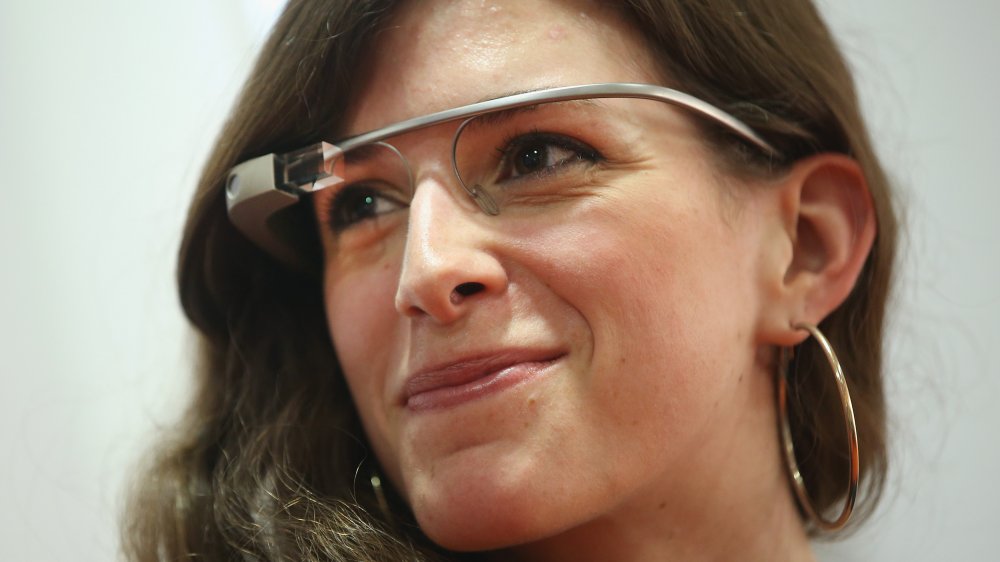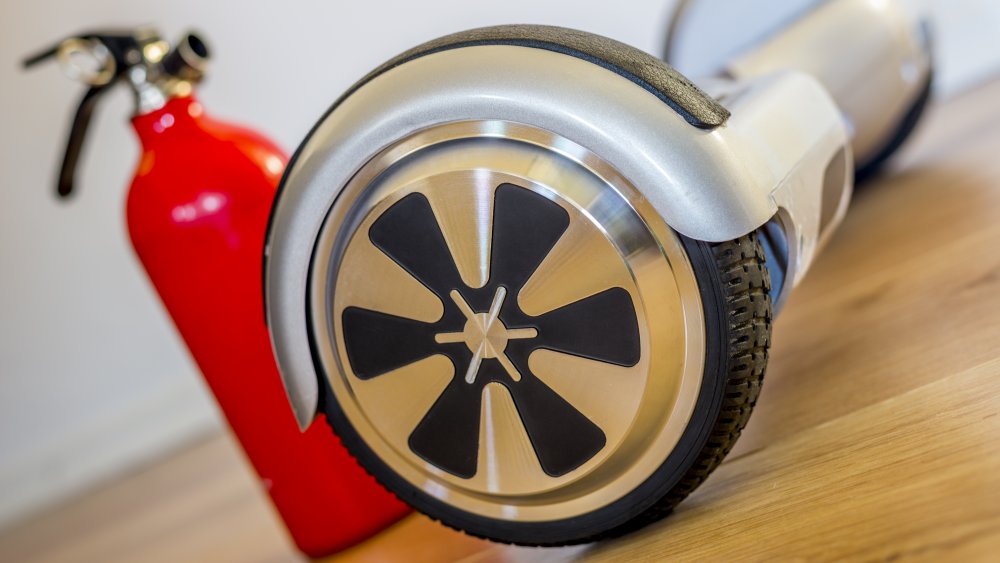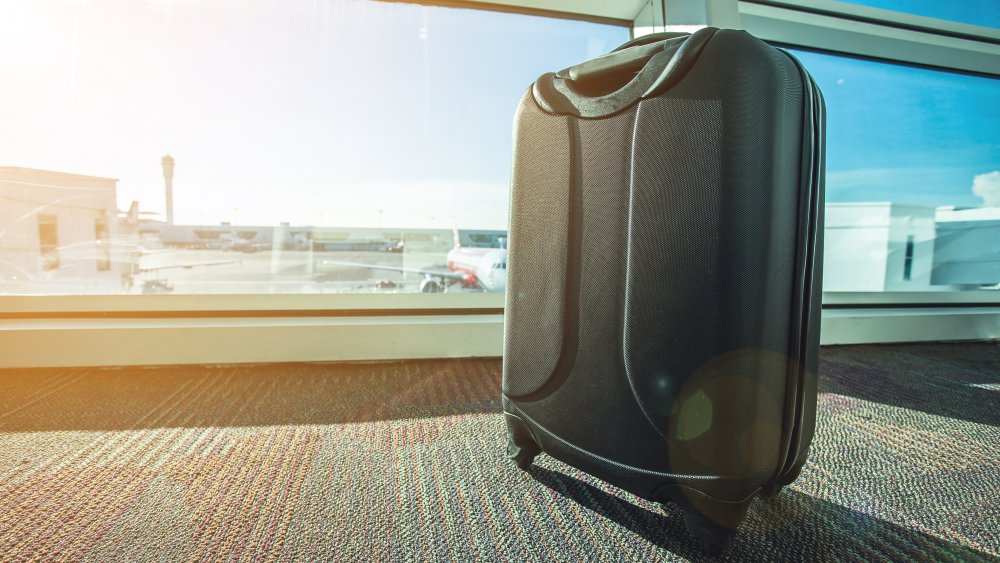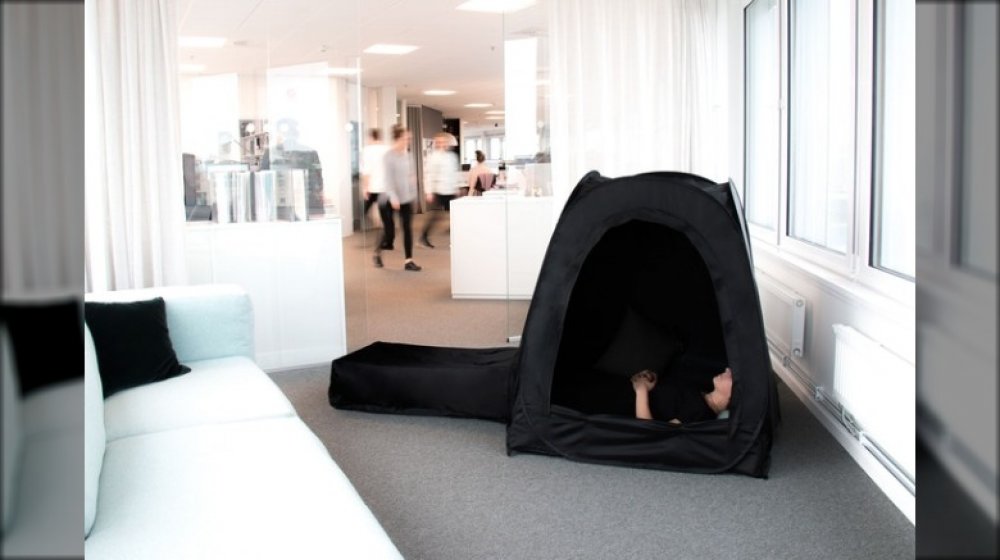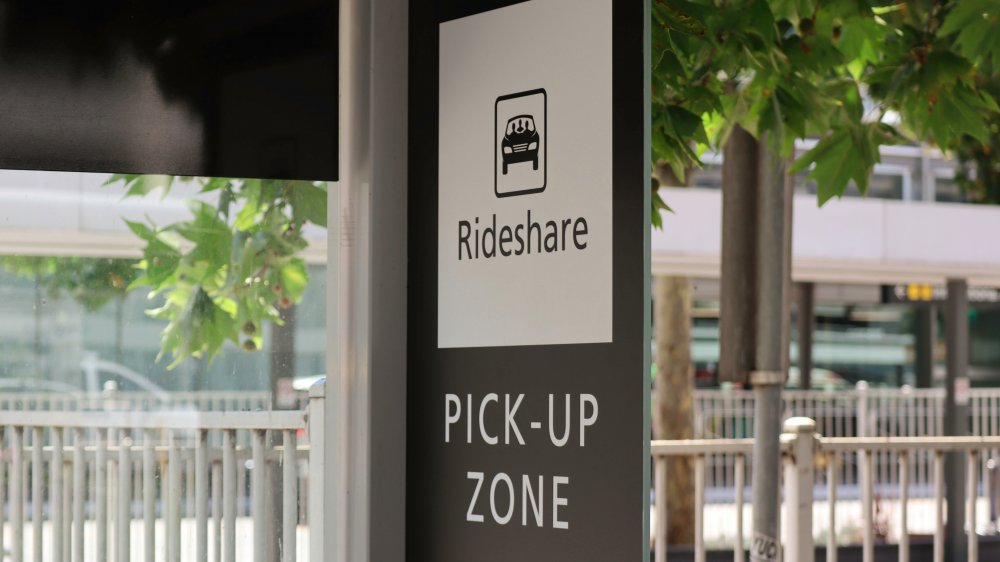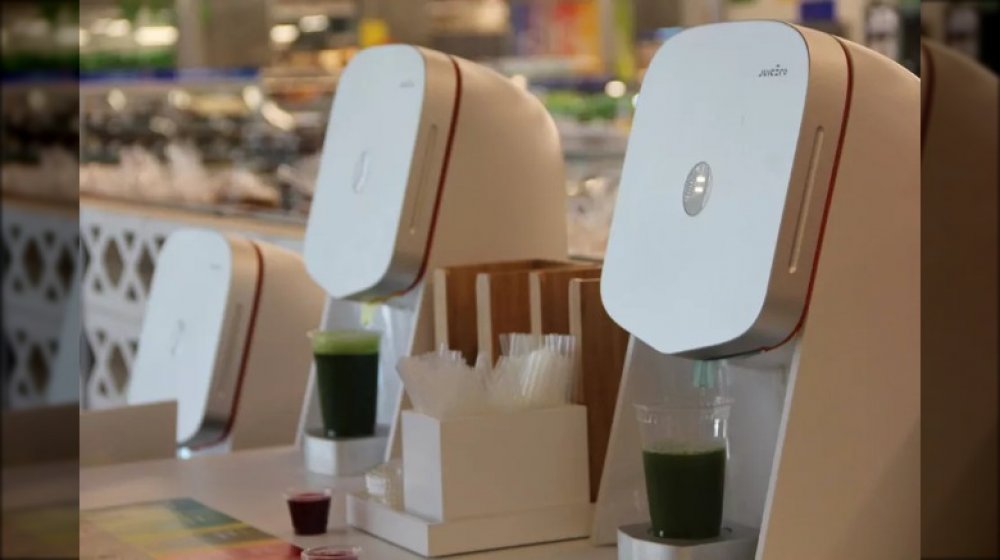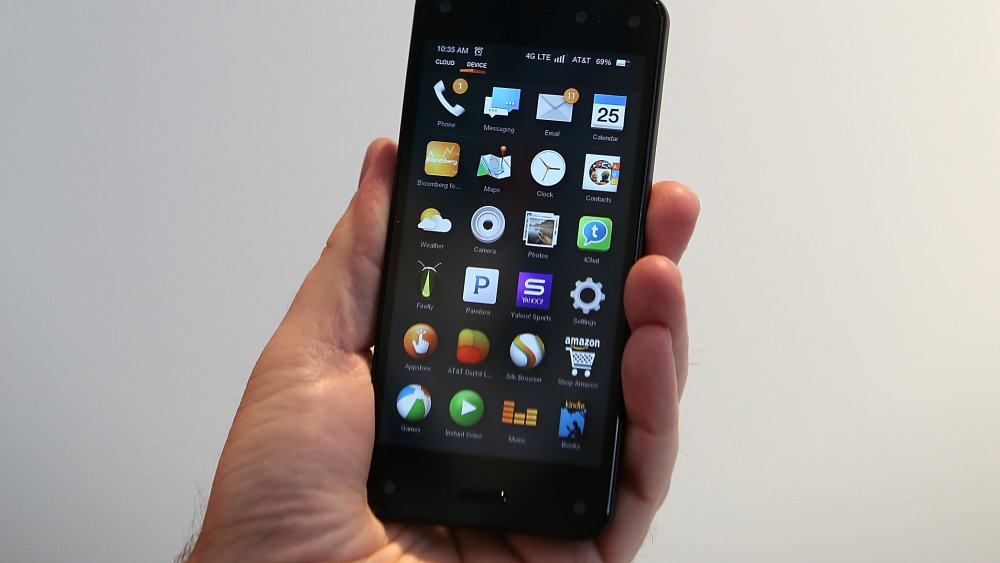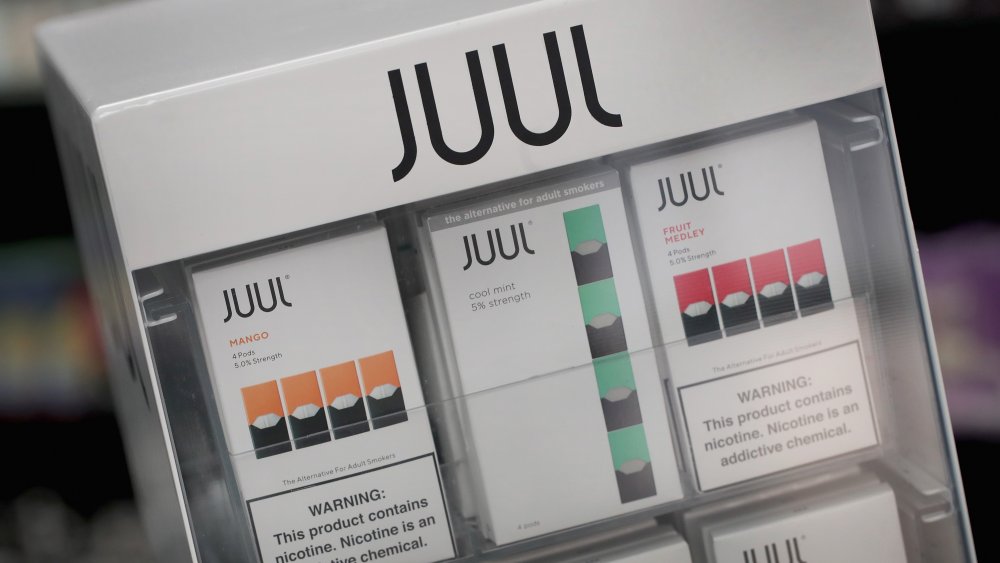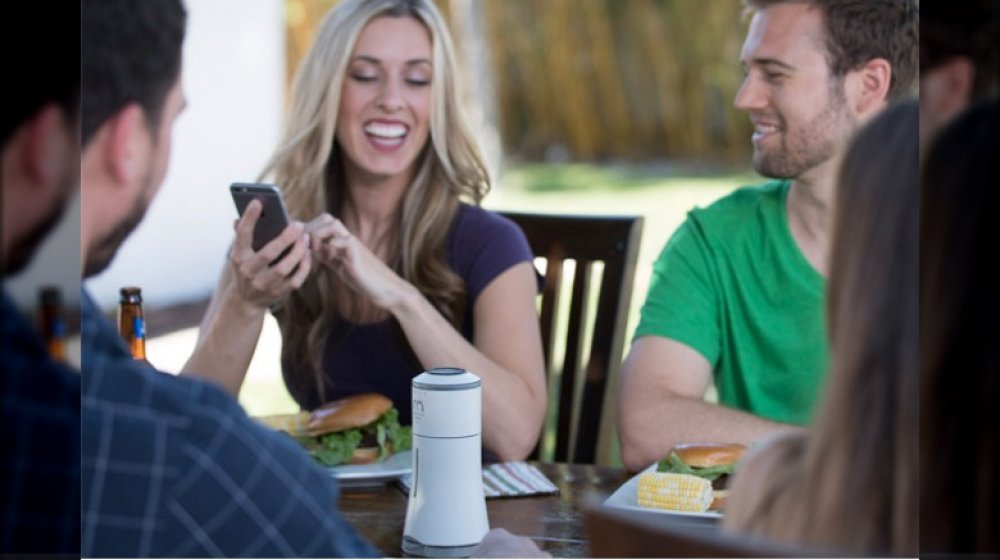Inventions From This Past Decade That Nobody Asked For
We may receive a commission on purchases made from links.
The plans we make for the future are constantly being thrown into flux. It's impossible to predict how the future will work out. The same goes for inventions. What seems like a great idea at the time might end up not being that great if things change. Inventions flop sometimes, creators are embarrassed, investors are sad. It's part of the invention process. Not everything can be a hit.
But then there are some inventions that seem like they were probably bad ideas from the conception stage. They're unnecessary, awkward, or just downright confusing. Have you ever seen something online or on TV that made you go, "Who is this even for?"
Nobody asked for these inventions, but they got made anyway. In some ways, that's the beauty of them. The best inventions are ones we didn't even know we needed. It's a fine line, though, and these inventions missed the boat on the "need" part.
Google Glass was a privacy nightmare
Virtual Reality (VR) is the hot thing in gaming, education, and so on. While immersing yourself in a different world sounds fun, the truth is there's still a lot of work to go with VR. Augmented Reality (AR), where pictures or video have data layered onto them, is more practical for now and much closer to us.
One of the first ways to use AR was 2012's Google Glass, a pair of glasses with a tiny projector that could show you information about your surroundings. For example, you could look at some food and see the nutrition facts pop up on the lens right in front of you. It was an exciting technology with a lot of amazing potential applications in several industries.
In practice, though, Google Glass wasn't it. It was incredibly dorky looking, for one thing, and it also had battery problems and glitchy software. Perhaps what doomed it the most, though, was it quickly developed a reputation for being creepy. One of its touted uses was facial recognition, by which you could do a web search for someone in front you. Google already had a history of privacy issues and Google Glass cranked that up to 11. A number of public places ended up banning them entirely, according to The New York Times. AR is still coming, but it might not be Google leading the charge.
Hoverboards nearly killed us all
When the Segway launched in the early 2000s, it introduced self-balancing technology to the world. While Segways were too nerdy for their own good and not extremely practical for everyday use, they also had a bit of a safety problem. Even though the machine was self-balancing and had handles to help, several people still got hurt from them. The company's owner (not the inventor, as is commonly claimed) even died by accidentally driving one off a cliff in 2010.
But just when the world thought the self-balancing scooter was dead, along came something even more terrifying: The hoverboard. These basically worked the same way as a Segway, but without the only real safety feature of the Segway, the handles. Now with even less balance and no real way to steer, it's not exactly clear how this thing wasn't designed specifically to injure people in horrible ways.
What started out as a media fad ended up quickly being something you never heard anything about except when people broke bones or otherwise hurt themselves using one. They also had this little problem of bursting into flames, according to Mashable. The U.S. government even put out a statement declaring hoverboards unsafe, reasonably so. They're still around today, but generally nowhere near as "cool" as they were for a brief while, before everyone discovered the myriad ways they would try to kill you.
Smart Luggage was kinda dumb
What if your luggage could do more than just hold your belongings? This was the idea behind smart luggage. The earliest forms included features like a battery to charge your various devices while you wait at the gate, instead of fighting a stranger for a free outlet. Those first generation bags had a big problem, though. The batteries were non-removable, so when the TSA banned luggage with a battery that couldn't be removed, several companies were instantly killed off, according to The Washington Post.
The smart luggage companies that survived went back to the drawing board and added removable batteries, in addition to features like GPS, locks that could only be unlocked via bluetooth, proximity alarms, and even a few extra-weird ones you could ride around like a scooter (which several airports banned pretty much right away). These newer smart bags were even cooler than the original ones and were more TSA friendly than before (though there's a possibility the agency could change its mind and ban more stuff later).
What really spoiled smart luggage, though, is none of the features were terribly useful. Outside of the ability to charge your devices, all of the other features were buggy at best or something you could have without a smart bag at worse. And with external batteries being fairly cheap, your bag doesn't really need to have one too, especially considering smart luggage often runs far more expensive than your regular bag.
The Pause Pod was a crowdfunded tent
Everyone needs a break sometimes. We could all stand to unwind in a quiet, isolated place. Typically, you'd do that in nature somewhere, or at least at home in your pajamas watching Netflix. But what if you could get away from it all anywhere you happen to be? Enter the Pause Pod, a portable way to seclude yourself. It's made of a light-blocking material and doesn't require a lot of space. It even has several add-ons, like a place to mount a tablet or an attachment to stretch your legs out.
Unfortunately, no one seemed to tell the creators of the Pause Pod was that thing already exists and it's called a tent. Although the Pause Pod was funded (at $200 apiece), it quickly became a laughingstock on social media, with critics saying the tech industry had gentrified tents. It was also not realistic for day-to-day living, because if you drop a tent in the middle of your office or whatever, people will think you're stunningly weird.
As pointed out by Teen Vogue, these might have been better used by the homeless, for whom having shelter at a moment's notice is very important, and people who have trouble with social overstimulation might also find the Pause Pod handy, but those two groups still won't want to drop $200 on a tent.
Adding voice assistants to things that don't need them
Voice assistants are 1) always female and 2) useful for a number of things, like checking your calendar or the weather. For other things, not so much. And yet, in the last decade, we saw the release of dozens of things like the AmazonBasics Microwave with Alexa built-in or Samsung fridges with a built-in touchscreen. While it's cool humans can build these things, it seems like no one stops to ask if they were needed.
Amazon's microwave, for example, lets you pop in two potatoes and say, "Alexa, microwave two potatoes." But as noted by TechCrunch, people usually put things in the microwave knowing the time/temperature needed to cook them, at which point voice commands become redundant. Samsung's touchscreen fridge lets you view Instagram from your fridge, but how is that better than just using your phone?
The strangest of these has to be Kohler's $8,000 smart toilet. As described by Tom's Guide, the toilet comes with a heated seat, lights for a more "immersive experience," and, for some reason, Alexa. Officially, you can have Alexa read you the weather or the news, but you can do that with a regular Echo or your phone. The odd part is you can ask Alexa to flush for you instead of taking two seconds to push the button or lever to flush.
Lyft Shuttle was a ridesharing bus system
Lyft and Uber may not be the most profitable ventures ever, but they have revolutionized the so-called gig economy, for better in some ways, worse in others. And, arguably, they both reinvented taxi service, but they also improved on taxis a bit, like being able to request a car from your phone, see where your car is at while you wait, and telling you how much your fare will be before you get in, all things taxi services might not have added for years.
They even introduced carpooling options to make fares even cheaper! So what's the next logical step to make rides even cheaper? What if you had the cars run a specific route, at specific times of the day, with specific pickup and drop off points? This was Lyft Shuttle and oh wait, it's also a city bus. Lyft reinvented the bus and called it something different. But that's not all! According to Salon, the pricing wasn't really better than a bus, at least not in San Francisco.
In fact, it seemed like the biggest benefit was for people of means. Namely, they didn't have to ride horribly uncool public transit with the unwashed masses. So it wasn't cheaper or more effective or anything sensible, just more exclusive. The bus isn't fun, but do we need a second, parallel system for upper class people? Thanks to the criticism and the questionable profit margins, Lyft decided to quietly kill Shuttle.
Juicero only pressed your wallet
When future movies want to show off the world of the 2010s, you'll likely see a lot of juice. Humans have been drinking juice since the beginning, it's nothing new. No, what the 2010s brought us was fancy, bespoke juice made from all-organic ingredients or whatever. Some of it is good! Some of it is questionable (especially the purported health benefits). Cold-pressed juice hit it big in the last decade as juice bars sprung up across the country.
The Keurig brought single-serve coffee pods into our homes, and Juicero wanted to do the same for juice. Juicero used packets of pre-chopped fruits and vegetables (which you bought directly from Juicero), then applied four tons of pressure to turn them into fresh-squeezed juice right in front of you, according to CNET. It wasn't an awful idea, but it cost $400, which put it firmly out of the reach of your average person. Juicero claimed the packets could only be squeezed by their machines.
Then, a 60-second video created by Bloomberg destroyed the whole thing. They took one of Juicer's proprietary packets, squeezed it with regular human hands, and got the same juice as what the machine put out. Juicero initially dismissed the video as a "hack," but when it turned out their $400 machines were less useful than a pair of human hands, the company quickly spiraled and, a few months later, closed their doors.
Amazon Fire Phone flamed out
Amazon was already one of the biggest companies on Earth in 2010, and over the last decade, they've solidified that position. They managed this by producing their own hardware, which changed the way customers interacted with the company. Branching out from their existing Kindle eBook readers, Amazon produced a series of low-cost tablets called Kindle Fire and, later, just Fire.
The Fire tablets were less expensive, lower-spec, and often smaller than Apple's 10-inch iPad. They ran Android, and while they were limited to Amazon's Android app store (not the Google Play Store), they were fairly successful, to the point Apple eventually introduced the iPad Mini to compete against Amazon and other budget tablet makers. So, why not take the Fire tablet idea and shrink it down to phone size to compete with iPhones, too? And they even gave it a glasses-free 3D screen, much like Nintendo's 3DS.
But it turns out people don't use phones like they use tablets, and the lack of apps like Google Maps and Gmail really hurt the Fire Phone. Additionally, it was pretty pricey, counter to its tablet siblings. According to CNET, the 3D was also shoddy and not all that special without Nintendo games to help it sell like the 3DS. Within two months, the phone went from $650 to $179. Paired with a two-year wireless contract, you could score one for a cool 99 cents. Amazon ended up losing $170 million on the Fire Phone.
Juul were jerks
Smoking has become even more unpopular than before, and not just because the tide of public opinion has continued to turn against tobacco products. What really made things change was the introduction of e-cigarettes, which vaporize a liquid instead of burning tobacco. While the long term effects of vaping aren't entirely clear yet, they have nonetheless become incredibly popular among former smokers.
While vaping itself is a controversial invention, there was one aspect of it that was really horrible: Juul, one of the companies that made vaping famous. Nearly becoming a generic trademark a la Hoover, Band-Aid, and Xerox, Juuls were stylish and ubiquitous. Their ad campaigns were massive, and Juul quickly became one of the biggest names in the brand-new vaping industry.
But Juul's pods also had far higher nicotine concentrations than other vapes and were incredibly popular with young people. It turned out that wasn't an accident after the company was raided by federal agents in 2018 and a report found Juul purposefully targeted kids on social media and intentionally made fruity flavors to draw in adolescents, according to Vox. Since then, they've closed their social media accounts, stopped selling most flavored pods, fired their CEO, halted all advertising, and backed new regulations on vaping, according to USA Today, but critics note this is almost exactly how partial owner Philip Morris weathered increased scrutiny on them in the past.
The As-Seen-on-TV Hat isolated you from society
Headphones are magic inventions, because not only do they keep other people from hearing what you're listening to, they also keep you from hearing what they're listening to. The privacy is wonderful, especially in quiet or crowded places. But what if someone could do the same thing for video? You might be wondering why someone would be concerned about other people seeing what they're watching in public. While there are a handful of legitimate reasons someone might want that, let's go ahead and assume the biggest usage for this is watching unmentionable things in public.
Thus was the As-Seen-on-TV Hat (real name) was born. The hat resembles a baseball cap, but with a very long bill, and a sort of blackout curtain hanging down. Basically, it's like a 90s sci-fi movie virtual reality helmet but cartoonishly elongated. Inside, there's a place to put a phone and a magnifying panel, which can be adjusted, but not removed, according to Gizmodo, which causes the screen to look blurry and distorted. So it not only makes you look silly, it also isn't very good at the thing it's meant to do.
One big oversight, though, is the hat effectively leaves you blind. If you're using headphones with it (none are included), you're sort of deaf as well, which could be a big problem depending on where you're using these. Maybe they'd be good for the plane or bus, if you don't mind looking really ridiculous.
Take Smalt with a grain of salt
Has your dining table ever felt like it could be smarter? You need a smart centerpiece, something for people to talk about. What you need is the world's first (and probably only) smart salt shaker, or Smalt for short. Ostensibly meant to help precisely portion out salt, Smalt is probably one of the least useful gadgets ever devised.
Smalt can give you an exact amount of salt, which isn't terribly necessary since spoons exist. While Smalt has controls on it, apparently the amount of salt can only be changed via the device's connected app, according to The Verge. It also, for some reason, has a bluetooth speaker and mood lighting built-in. The batteries last a whopping four hours on a charge. Since the salt is dispensed into a tray by the device, and you can't just pick it up and shake it, which means once the batteries run out, your salt shaker can no longer dispense salt.
Smalt costs $200 and, for all of its other bells and whistles, can only dispense regular table salt. It can't freshly grind salt for you. It does have Alexa support, though, so if you'd like to talk to your salt shaker, Smalt is the product for you. (If it ever gets fully funded on Indiegogo, that is.)
Quirky Egg Minder didn't connect with people
Now we're getting deep into the world of products so weirdly specific, it's not really clear if anyone ever needed them. For example, the Quirky Egg Minder. Almost no one buys trays specifically for their eggs since they come in their own carton, much less a smart one, and yet the Quirky Egg Minder still asks for your money.
Unlike other products on this list, this one isn't terribly expensive, only running about $13. But considering its few features, that doesn't even seem worth it. The Quirky Egg Minder is wi-fi connected, and so you can connect to it remotely in order to check how many eggs you have while you're at the grocery store, according to CNET. That's really it, that's basically all it does. It does also have small LEDs to mark the oldest egg in the tray, but this can be done without a wi-fi egg holder.
The especially weird part about the product is no one seemed to consider the fact their wi-fi enabled device sits in a large, sealed metal box. If you look up reviews for the Quirky Egg Minder, you'll find a lot of negative feedback regarding connectivity problems. Since a fridge is basically a cold Faraday cage, it's hard for wi-fi signals to penetrate its walls and connect to a weird egg tray.

